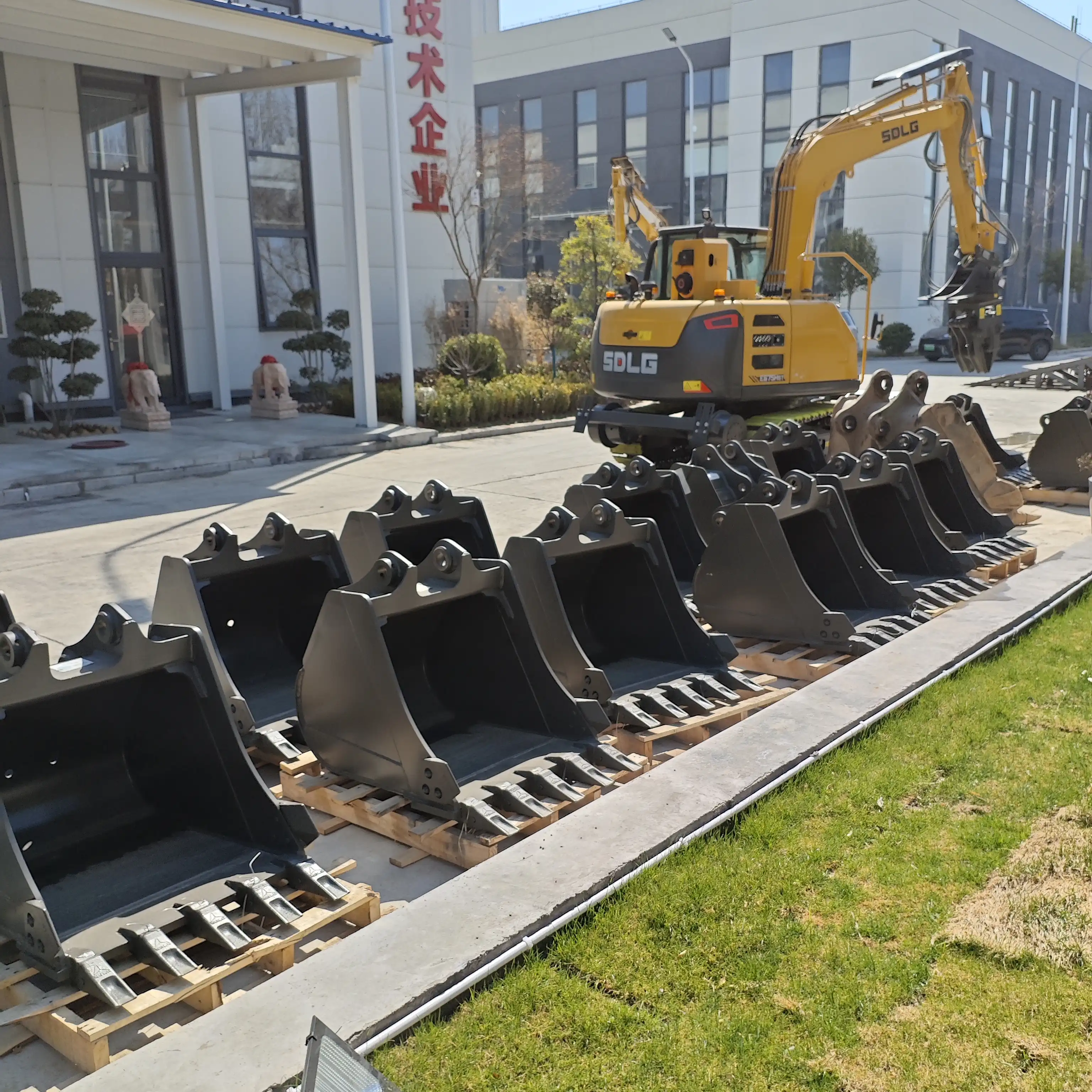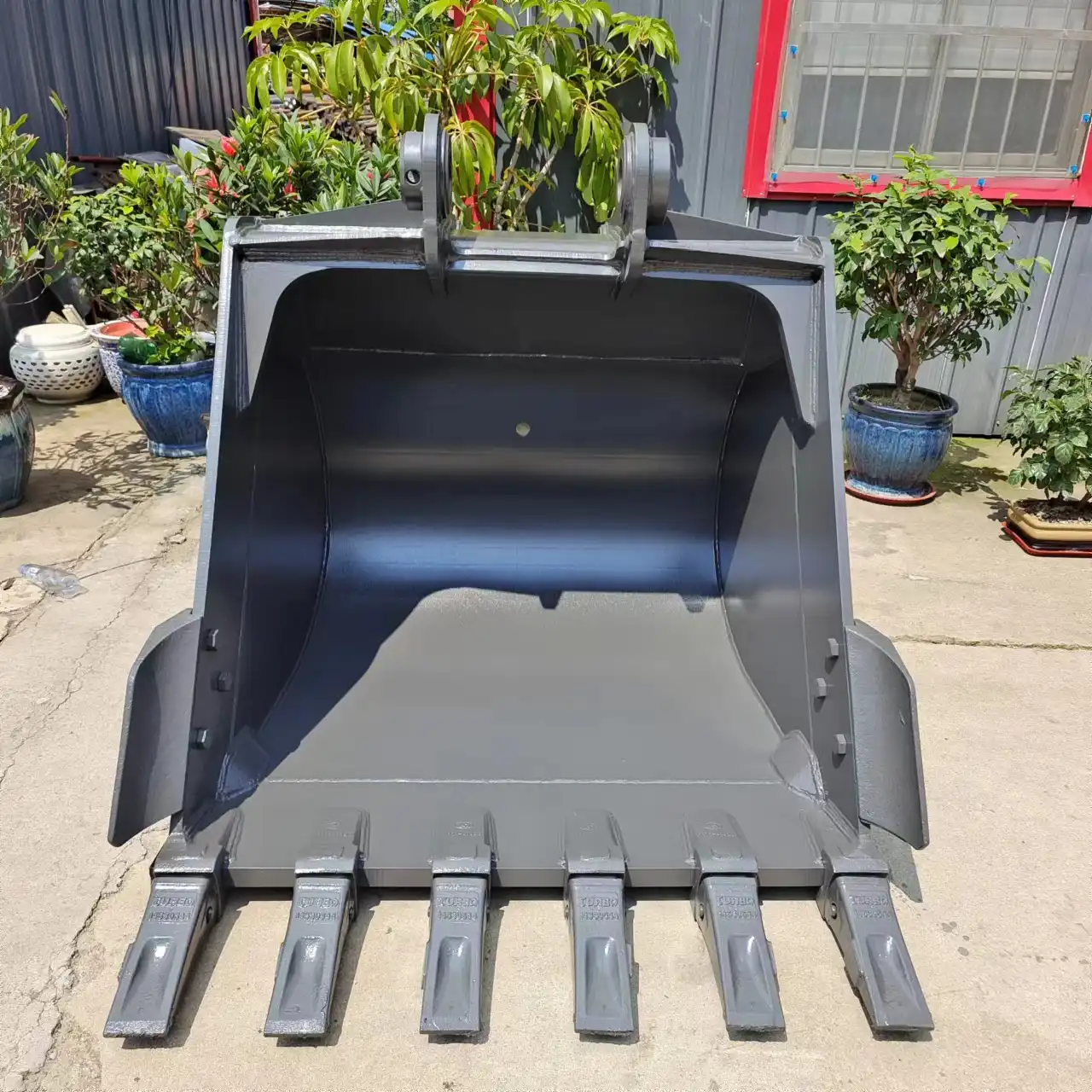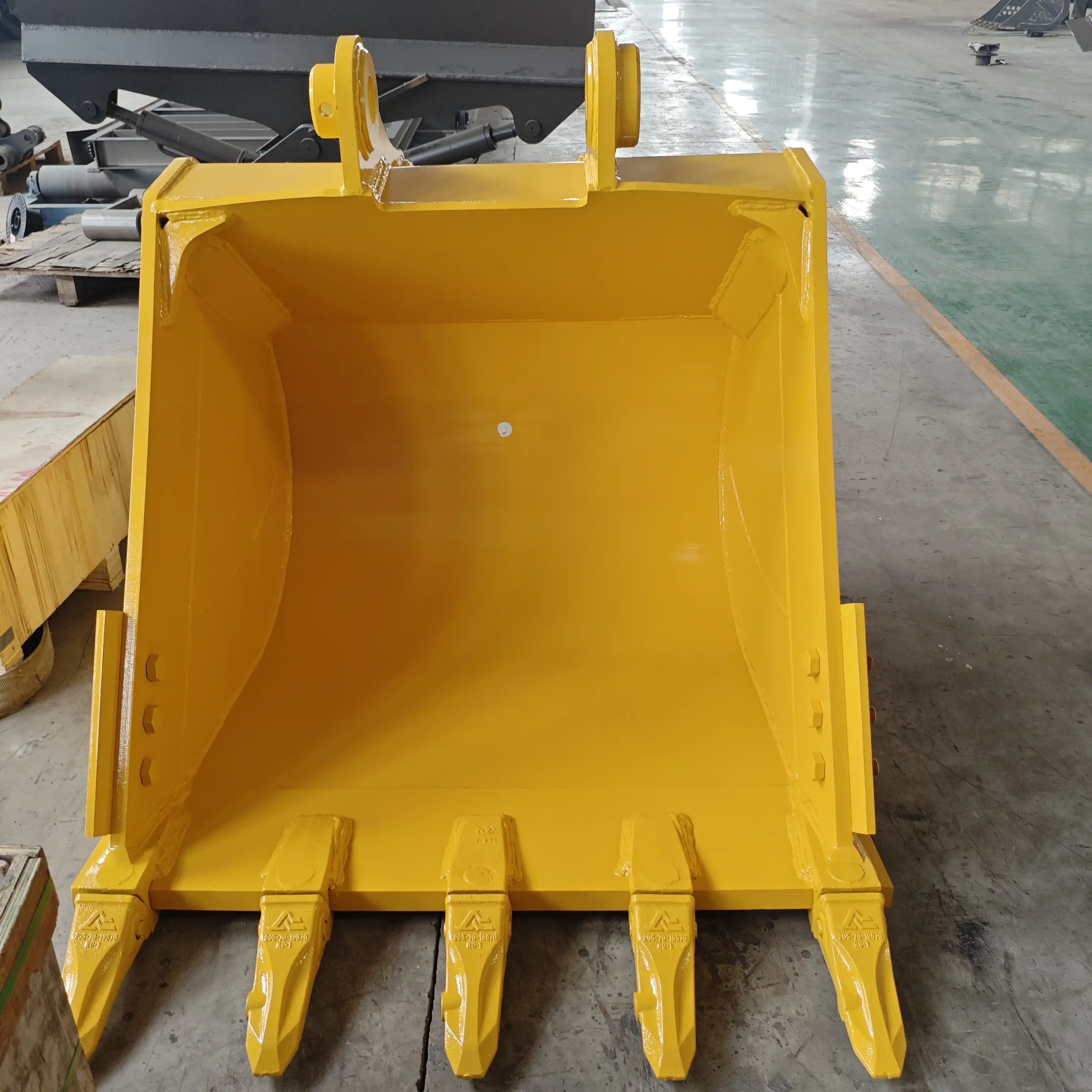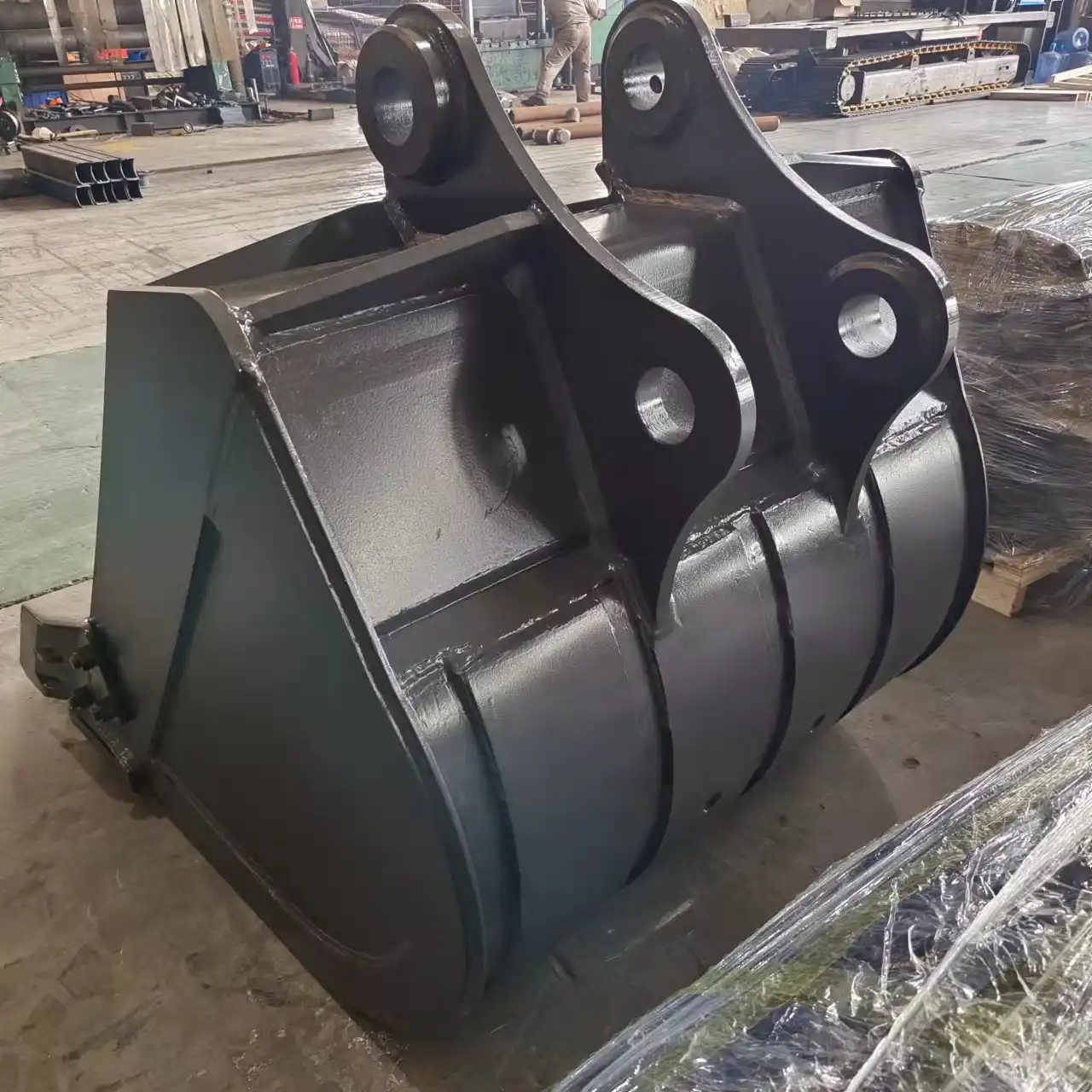Standard Excavator Bucket Widths
When it comes to excavation projects, selecting the right equipment dimensions can make or break your efficiency and bottom line. Understanding bucket widths is crucial for matching your machine to the job requirements. The standard width of excavator buckets typically ranges from 500mm to 2000mm, with variations based on machine size, application requirements, and industry specifications. This dimensional aspect directly impacts digging efficiency, material capacity, and overall project timeline.
For construction companies, mining operations, and railway maintenance crews, choosing the appropriate bucket width ensures optimal performance. Too narrow, and you'll spend excessive time completing excavation tasks; too wide, and you might sacrifice maneuverability in tight spaces. Whether you're working on landscaping, demolition, or waste management projects, the bucket width serves as a fundamental specification that deserves careful consideration.
Industry professionals recognize that proper bucket width selection contributes significantly to fuel efficiency, reduces wear on equipment, and ultimately impacts project costs. Railway construction specialists particularly benefit from precision-matched equipment dimensions when working within the confined parameters of track maintenance. With customization options readily available, today's excavator attachments can be tailored to meet even the most specific operational requirements.
Standard Width: Horizontal Dimension Of Bucket Opening

Width Measurements
The width of a bucket refers specifically to the horizontal dimension across the cutting edge. This measurement fundamentally determines how much material can be collected in a single pass and the size of the trench or excavation area that can be created. Width measurements are typically expressed in millimeters or inches, with most manufacturers offering standardized increments to accommodate various excavator models and applications.
For precise operations like utility trenching or pipeline installation, width accuracy becomes especially critical. Engineers and operators must account for this dimension when planning excavation work to ensure compliance with project specifications. The bucket width directly correlates with the excavator's stability during operation - wider buckets on smaller machines may create balance issues when fully loaded.
Impact On Excavation Efficiency
Bucket width significantly influences productivity rates across different soil conditions. In loose materials like sand or gravel, wider buckets can dramatically increase cubic yards moved per hour. Conversely, in dense clay or rocky terrain, narrower buckets often prove more effective by concentrating the machine's digging force into a smaller area.
Railway maintenance crews frequently adjust bucket widths based on specific track-side operations, optimizing between speed and precision. For drainage ditch maintenance, wider profiles expedite material removal, while for precise foundation work around existing structures, narrower options provide necessary control. Equipment managers must balance these performance factors against operational requirements when selecting attachment specifications.
Width-to-Depth Relationship
Engineering principles establish important correlations between an excavator bucket's width and its optimal digging depth. This relationship affects both the structural integrity of excavations and the machine's operational efficiency. As a general rule, wider buckets work most efficiently at moderate depths, while narrower configurations excel in deep excavation scenarios.
For forestry applications and land clearing operations, this width-to-depth balance becomes particularly important when removing stumps or working around existing root systems. The bucket's width must allow sufficient material collection while maintaining maneuverability in often challenging terrain. Experienced operators understand that matching these dimensions appropriately reduces cycle times and minimizes unnecessary strain on hydraulic systems.
Classification And Typical Width Range

Mini Excavator Buckets
Mini excavators, typically weighing between 1-6 tons, utilize buckets ranging from 500mm to 900mm in width. These compact machines excel in residential projects, utility maintenance, and confined workspaces where maneuverability takes precedence. Their excavator bucket attachments feature proportionally balanced dimensions to maintain stability during operation while still providing adequate material handling capacity.
Landscaping professionals frequently select mini excavator attachments at the 600mm width point, offering an ideal compromise between digging capability and precision. For interior demolition work or foundation repairs in existing structures, the 500mm option provides necessary clearance while still maintaining productive output. These smaller buckets typically offer capacity ranges from 0.1 to 0.3 cubic meters, suitable for precise material handling requirements.
Urban construction projects increasingly rely on these compact dimensions to navigate restricted access points and operate in congested environments. The reduced bucket width also corresponds to lower weight, making transportation between job sites more economical and reducing surface damage on finished areas like driveways or landscaped surfaces.
Mid-Size Excavator Buckets
Mid-range excavators, commonly found in the 7-25 ton class, typically utilize buckets between 900mm and 1500mm in width. These versatile machines represent the backbone of general construction operations, offering sufficient power for significant earthmoving while maintaining reasonable transportability. Their excavator bucket configurations balance material capacity with operational efficiency.
Water management projects frequently utilize the 1200mm width option, providing efficient trench excavation for pipeline installation while maintaining precise grade control. Municipal works departments typically maintain several width options in this range to address varying infrastructure maintenance requirements. The corresponding capacity for these mid-size attachments generally falls between 0.3 and 1.5 cubic meters.
Mining support operations and commercial development projects benefit particularly from this equipment class, as it offers sufficient production capacity without the logistics challenges associated with larger machines. The moderate bucket width allows effective material handling across diverse soil conditions while minimizing excess material disturbance in sensitive areas.
Heavy-Duty Excavator Buckets
Large-scale excavation projects employ machines in the 25-90 ton range, utilizing buckets from 1500mm to 2000mm wide. These substantial attachments facilitate major earthmoving operations in mining, large infrastructure development, and heavy demolition applications. The excavator bucket dimensions at this scale prioritize volume capacity and durability under extreme operating conditions.
Quarry operations typically employ buckets at the upper width range, maximizing material movement during each operational cycle. With capacities ranging from 1.5 to 5.0 cubic meters, these attachments significantly accelerate project timelines when operating in appropriate conditions. Their substantial cutting width creates uniformly flat surfaces, particularly valuable in road construction base preparation.
Dam construction and flood control projects benefit from these wider bucket configurations when creating large-scale water management structures. The increased width improves efficiency when establishing consistent grades across extensive areas. Engineering teams carefully match these substantial attachments to appropriate power units to ensure hydraulic systems can provide adequate force distribution across the wider cutting edge.
Industry Standards And Customization

Manufacturing Specifications
Industry manufacturing standards establish baseline dimensions for excavator bucket widths to ensure compatibility across different machine models and applications. These specifications typically conform to ISO (International Organization for Standardization) guidelines, providing consistency in measurement and performance expectations. Manufacturers conduct extensive field testing to verify that standard width offerings meet operational requirements across various material densities and working conditions.
Quality control processes monitor width precision during production, typically maintaining tolerances within ±5mm to ensure proper fit and function. Material thickness and reinforcement structures vary proportionally with bucket width to maintain structural integrity under load. Engineering departments continuously refine these specifications based on field performance data and evolving industry requirements.
Professional equipment managers should familiarize themselves with these manufacturing standards when planning fleet acquisitions or replacement schedules. Understanding the relationship between standardized widths and attachment mounting systems ensures compatibility and prevents costly equipment mismatches. Manufacturers regularly publish specification updates to reflect advancements in materials science and structural engineering.
Customization Options
While standard widths satisfy most operational requirements, customization options address specialized applications across railway construction, mining, and specialized demolition work. Custom excavator bucket dimensions typically involve modifications to width measurements based on specific operational parameters and material characteristics. These tailored solutions optimize performance for unique project constraints or specialized material handling requirements.
Railway maintenance operations frequently utilize customized bucket widths designed specifically for ballast renewal or drainage channel maintenance alongside tracks. Mining operations may require specialized width configurations for particular ore extraction techniques or specific geological formations. These custom dimensions extend beyond simple width adjustments to include specialized cutting edge profiles and reinforcement structures.
Tiannuo Machinery offers comprehensive customization services, accommodating width requirements from 500mm to 2000mm based on specific operational needs. Their engineering team provides consultation services to determine optimal dimensions based on material density, excavation depth, and cycle time requirements. This collaborative approach ensures that customized bucket specifications precisely match the intended application.
Application-Specific Considerations
Different applications demand specific width considerations beyond standard measurements. Trench excavation for utilities typically requires precise width control to minimize excess material removal and subsequent backfill requirements. For excavator buckets used in precision grading applications, width directly impacts the machine's ability to create consistent surfaces with minimal passes.
Waste management operations benefit from wider bucket configurations that maximize material handling efficiency when managing loose debris. Conversely, archaeological excavation and environmental remediation work typically require narrower profiles that allow more controlled material removal. Understanding these application-specific requirements helps equipment managers select appropriate width specifications for their particular operations.
Forestry applications introduce additional considerations related to vegetation density and root structure interaction. Demolition specialists must balance bucket width against structural clearances when working on selective structure removal projects. These specialized requirements highlight the importance of consulting with application experts when selecting appropriate excavator attachments.
FAQ
①What are the most common excavator bucket widths for general construction?
The most commonly used excavator bucket widths in general construction range from 600mm to 1200mm, depending on machine size. Mid-size excavators typically utilize 900mm to 1000mm buckets for versatility across various applications.
②How does bucket width affect excavation speed?
Wider buckets typically increase material removal per cycle, potentially improving excavation speed in suitable conditions. However, this advantage diminishes in dense materials where the increased resistance across a wider cutting edge can actually reduce efficiency.
③Can I use a wider bucket than recommended for my excavator?
Using oversized buckets can stress hydraulic systems, reduce stability, and potentially damage equipment. Always consult manufacturer specifications to ensure bucket width is appropriate for your specific excavator model.
④How do I determine the ideal bucket width for my project?
Consider material type, required precision, space constraints, and production targets. For precise trenching, select narrower widths; for general excavation in open areas, wider configurations may increase efficiency.
Excavator Bucket Manufacturers

As an excavator bucket manufacturer, Tiannuo Construction Machinery Co., Ltd. understands that selecting the appropriate bucket width is a critical decision impacting operational efficiency across various applications like construction, mining, railway maintenance, and demolition. We offer a range of standard widths from 500mm to 2000mm and customization options to meet your specific needs. Our expertise in the relationship between bucket width and factors such as material density, excavation depth, and project specifications ensures optimal equipment performance and cost-effective operations. We recognize that for professionals in the construction and excavation industries, matching bucket width to specific applications delivers tangible benefits in production rates, fuel efficiency, and equipment longevity. Whether you're managing a diverse equipment fleet or specializing in particular construction niches, our knowledge of proper bucket sizing contributes significantly to your operational success. For expert consultation on selecting the optimal bucket width for your application, contact our engineering team at rich@stnd-machinery.com.
References
Construction Equipment Guide: Standard Dimensions for Excavation Attachments, 2023 Edition
International Journal of Mining and Excavation Engineering: Optimizing Bucket Width Selection for Enhanced Productivity
Association of Equipment Manufacturers: Standardized Specifications for Hydraulic Excavator Attachments
Handbook of Construction Equipment Dimensions and Performance Metrics, Fifth Edition
Principles of Excavation Engineering: Equipment Selection and Application Guidelines
About Author: Arm
Arm is a leading expert in the field of specialized construction and railway maintenance equipment, working at Tiannuo Company.

